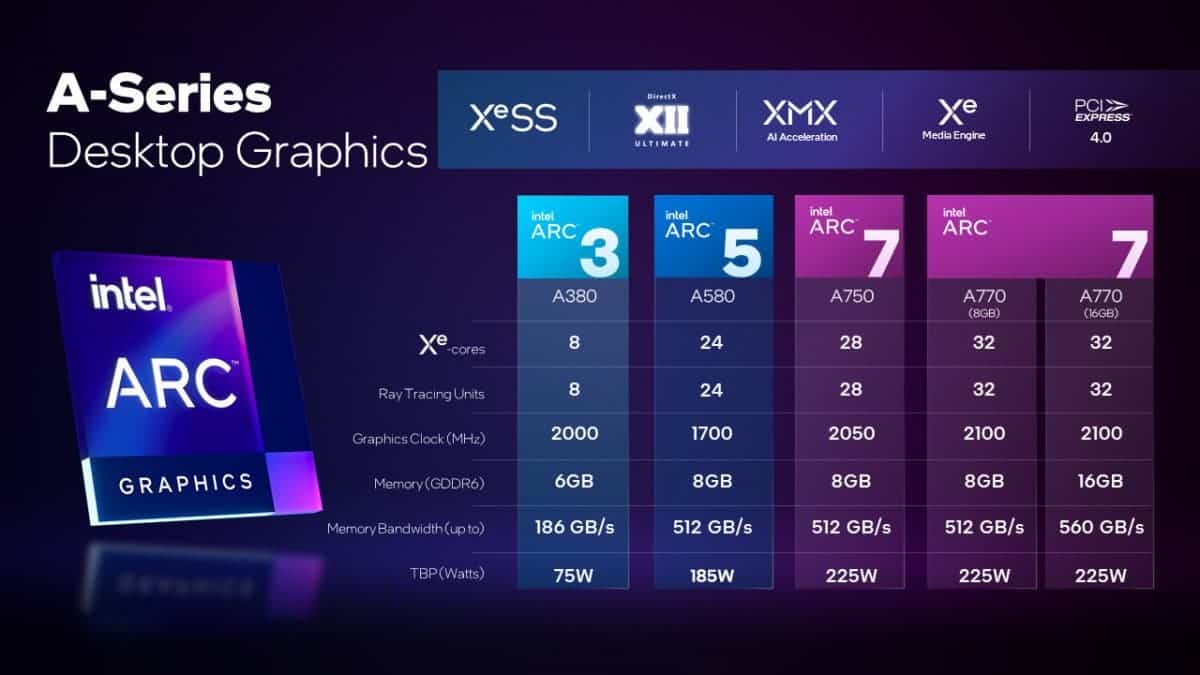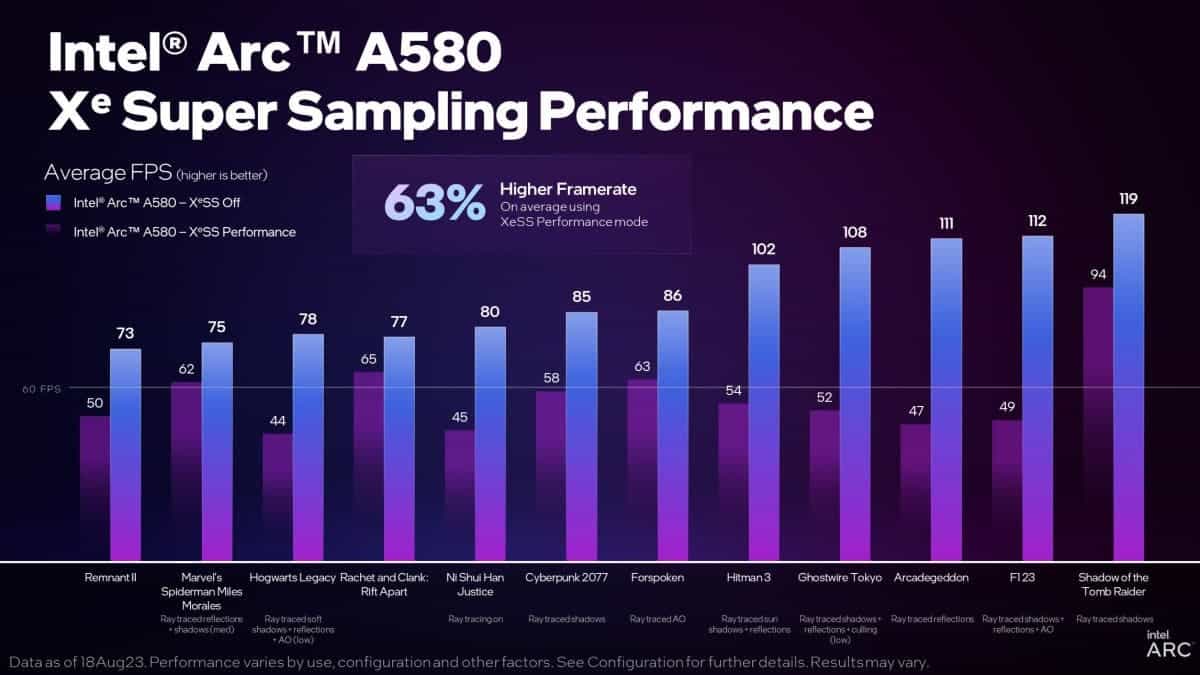If you can recall, Intel unveiled its Arc A-Series desktop cards last year. And during the unveiling, it introduced four models: the Arc A770, A750, A580, and A380. Among them, the market only saw the release of the Arc A770, A750, and A380. The Intel Arc A580 remained pretty much under the radar.
Well, Intel has finally decided to launch the budget-friendly GPU. Starting today, you can grab the Arc A580 for your gaming system for a starting price of $179. It’s available through GPU partners Sparkle, Gunnir, and ASRock. And considering its price, the GPU is a decent purchase for budget-centric builds.
More About the Intel Arc A580
Under the hood, the Intel Arc A580 comes with 24 Xe cores and ray tracing units. The base clock speed of the card is 1700MHz. However, all the GPU partners overclocked the GPU, making it reside in the 2000MHz range. The board also comes with 8GB of GDDR6 memory, which features a 256-bit wide memory bus.

The memory bus of the Intel Arc A580 offers 512GB/s of memory bandwidth. In terms of power, the board features a total board power rating of 180W. As you can tell, the overall specs of the GPU are pretty similar to the Arc A750. However, that board goes for $249.
Now, if you’re wondering why Intel took almost a year to launch the Arc A580, it’s likely for inventory issues. After all, the GPU is a cutdown version of the A750 and A770. So, Intel had to wait for enough inventory of unused wafers from the other 7-series cards.

But the good news is that the Arc A580 can offer similar performance to the A750. Intel has also packed XeSS, which aims to offer a smooth high refresh rate experience on 1080p. However, it’s important to note that the card is more power-hungry than its rivals. For example, the RX 6600 is rated for 132W while the RTX 3050 is at 130W.





